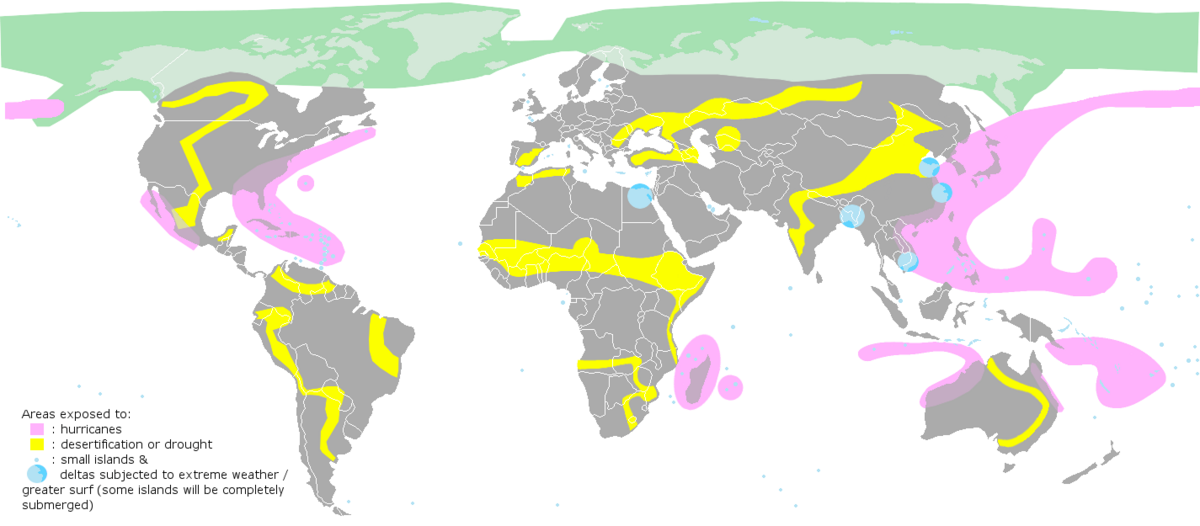Environmental migration facts for kids
Environmental migration happens when people move from their homes because of changes in their natural surroundings. These changes can happen quickly, like floods, earthquakes, or volcanic eruptions. They can also happen slowly over a long time, such as when land becomes a desert or when the sea level rises.
When their environment changes too much, people often have to find a new place to live. They leave their homes to find safety and a better life elsewhere.
Contents
What is Environmental Migration?
Environmental migration is a type of human movement caused by environmental changes. These changes make it hard or impossible for people to stay where they are. It's a big topic that many experts are studying, especially as the world's climate continues to change.
Why People Move Because of the Environment
People move for many reasons related to their environment. Some reasons are:
- Sudden Disasters: Events like big floods, strong storms, or earthquakes can destroy homes and farms. People must leave quickly to find safety.
- Slow Changes: Over time, things like droughts can make it impossible to grow food. Rising sea levels can flood coastal towns. These slow changes force people to look for new places to live.
- Lack of Resources: When clean water or good land for farming becomes scarce, people might have to move to find these basic needs.
Environmental Migrants and Climate Refugees
Sometimes, people who move because of environmental changes are called environmental migrants. If the changes are directly caused by climate change, they might be called climate refugees. It's like nature itself is forcing them to leave their homes. This is different from other types of refugees who might be fleeing war or persecution from other people.
Impacts of Environmental Migration
Environmental migration can have big effects on both the people who move and the places they move to.
Challenges for Migrants
When people have to leave their homes, they often face many challenges:
- They might lose everything they own.
- It can be hard to find new jobs or homes.
- They might struggle to fit into new communities.
- Children might miss school.
Effects on New Communities
The places where environmental migrants move to can also face challenges:
- More people might need homes, schools, and healthcare.
- There can be pressure on local resources like water and food.
- Sometimes, it can be hard for new and old residents to get along.
How People Are Helping
Many groups and governments are working to help people affected by environmental migration. They are trying to:
- Help communities prepare for environmental changes.
- Provide aid and shelter to those who have to move.
- Work on solutions to slow down climate change.
- Support migrants in finding new homes and lives.
Images for kids
-
Shelters in Kenya for those displaced by the 2011 Horn of Africa drought
See also
 In Spanish: Refugiado ambiental para niños
In Spanish: Refugiado ambiental para niños



